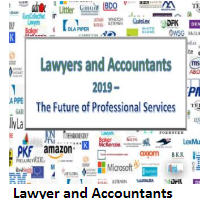Ben Weinberger Legal Operations Director with Nextlaw In-House Solutions and previously served as Prosperoware’s Lawyer in Residence.
Legal Operations Director with Nextlaw In-House Solutions and previously served as Prosperoware’s Lawyer in Residence. He has extensive experience in the strategic development, transformation, and direction of operations and technology in a variety of public and private organizations. He previously served as Chief Strategy Officer for a global consultancy and in senior executive roles for a top UK law firm, two AmLaw 200 law firms, and the largest municipal law office in the US. Ben has consulted on projects for multinational organizations including The Walt Disney Company and Chevron and previously practiced law in Chicago where, after clerking for the Federal District Court, he served as legal counsel for the Illinois Department of Professional Regulation. He is a regular speaker on such topics as Data Privacy and Security, Information Governance and Emerging Technologies, and Transformational Trends in Professional Services. He holds a BA in Economics from the University of Michigan and a JD from the University of Wisconsin.
_______________________________________________________________________________
In the “good old
days” of law practice, pricing was a simple concept. It was a sellers’ market,
and law firms could name their price. Estimates were used for guidance at best.
In fact, a colleague of mine, a former law firm managing partner, regales audiences
with tales of how when he first entered practice, his mentor taught him a
simple method for pricing work. It was less than exact: At the end of the
matter, hold the file of paperwork in one hand and set your price based on the
general weight of it (“That feels like it’s about $45,000’ worth of work”).
Somehow, that used to be acceptable. Even for those firms that didn’t subscribe
to the “weight = cost” formula, a simple ballpark figure quoted along with a
minimum retainer accompanied by an hourly rate was commonplace. Firms even
passed on a bevy of expenses on top of that formula, charging for faxes,
photocopies, long-distance, and other creative concerns. In 2008, that all
changed and has continued to evolve.
Firms today need
to embrace the best practice of evaluating pricing before a matter is opened,
as it allows the firm to have the appropriate enterprise controls. There are
two elements to proper pricing of a matter: (1) determining scope (or
budgeting) and (2) what pricing or fee type should be used with the matter.
Firms are becoming better at the latter but are quite unskilled in the former.
Both must be razor sharp and working in concert to form the bedrock of
profitability in the new market for legal services.
Legal services
has become a buyer’s market, which is why we must reshape profitability.
Corporate clients expect the same quality of work but now delivered within
price guidelines they set at the outset of a matter. When dealing with outside
law firms, there’s no more “guesstimation” in legal billings, and there’s
little room to negotiate. A firm’s value is found in the delivery of quality
matters at the price and level of expertise they expect. The insertion of price
and client-set budgets has upended the law firm business model.
The challenge
for firms adjusting to this tectonic shift is that historically, there was
little to no understanding of the true cost of delivery for their services,
complicating the transition to delivering work — profitably — to budget. Firms
must reengineer themselves, and quickly. Clients are aggressively interested in
managing rates, are refusing to pay for firms’ inefficiencies, and simply need
predictability so they can manage their own intensely scrutinized budgets. It
doesn’t get much more essential, economically speaking, than understanding cost
and creating the right processes around that cost to ensure the profitability
of your business — and that’s what firms must do.
Rates are a Profit Driver
Although this is
obvious, the point still needs to be made: Billing rates remain the core
pricing structure used in the legal industry, and the level of a firm’s rates
is key in determining its level of profitability. As a rule of thumb, a
one-point increase in rates leads to a two-point increase in profit. The reverse
applies as well. In our experience, firms typically have a range of 1 – 3
percent increase in profit for each point of rate change. The range exists
because it depends on the specific timekeepers involved, and the relationship
between the billing rates and the timekeepers’ cost rates.
Discounts happen when clients tell us our prices are too high for particular pieces of work. Specifically, write-downs are reductions from a bill before it goes to the client, and write-offs are reductions requested by the client after they have seen the bill. Write-downs signal that the firm or a partner has decided that a particular effort had no value. Examples of write-downs include:
•
The work is out of
scope, and the partner knows the client will not pay for it.
•
The associate was
inefficient in their work.
•
The associate did
not understand the assignment and did the wrong thing.
Write-downs
become important as firms look for ways to lower the cost of delivering a
service. By identifying recurring types of write-downs and eliminating the
effort before the work is performed, a firm can lower the cost of the service.
Write-offs
signal that the client did not see value in a particular effort. This may occur
because the firm did not communicate the value of the effort properly, or it
may just be that the work should not have been done. Note that, in some cases,
write-offs are just good old-fashioned flaky clients who don’t pay their bills
(a cost of doing business).
Citi Private
Bank Law Firm Group recently
reported revenue growth has fallen to 3.6 percent throughout 2017,
down from 3.7 percent in 2016. Oddly, this is almost entirely in response to
increased billing rates — an increase of 4 percent, to be exact. While the
difference is marginal, when you consider that the 4 percent increase is much
greater than normal, that demand has dropped by 0.2 percent, and that
collection cycles are lengthening — it illustrates that raising rates is not a
good long-term strategy.
Firms need to adjust their pricing and pricing strategies in response to the market. The challenge is for firms to understand and adequately address the many moving parts of pricing in today’s market and reflect the actual cost of their matter delivery. This requires technology to harness data.
Beyond the Billable Hour
So, how do firms
now need to price? First, there
are two classifications of fee types: hourly and non-hourly. The hourly fee
types are those that are still based on per-hour rates. Non-hourly fees have no
billable rate and are set using many different criteria. The table below lists
the most typical fee types.
|
Fee Type |
Definition |
|
Hourly – Standard |
Client agrees to pay hourly |
|
Hourly – Fee Cap |
Client agrees to pay hourly up to a certain amount for the matter or
phase |
|
Hourly – Recurring Fee Cap |
Client agrees to pay hourly up to a
certain amount for the matter or phase on a recurring basis |
|
Hourly – Collar |
A pseudo-fixed fee. The client and firm agree on a fixed fee. They also agree on a percentage above (top collar) and below (bottom collar) the fixed fee. The client pays a bonus if the matter comes in under the bottom collar or gets a discount if the matter comes in over the top collar. Example: Fixed fee element $1,000,0000 Range 10% above or 10% below If fees are below $900,000, a bonus is provided of 5% or so up to the fixed fee amount. If fees are $1,100,000, then the matter is billed hourly with a
large discount. |
|
Hourly – Partial Contingency |
An hourly contingent fee. Generally, the concept around any
contingency is that the firm accepts some of the risk. They discount the rate
and then the firm will receive a bonus if the deal succeeds and pays a
penalty for failure. Sometimes only the penalty feature is
provided, which is also known as a “busted deal.” This is typically then done
with a rate closer to a standard rate. This also could be a lower fixed-fee
amount. The reward is either based on fees or
an outcome amount. The busted deal element is just fees. With a partial contingency
arrangement based on outcome, there will be negotiations over what expenses
will be paid by the client and whether expenses come out before or after
calculation of the reward. |
|
Hourly – Partial Contingency
(Holdback) |
Holdback is a fee-based success. The client typically agrees to a
standard rate card. The firm then discounts off standard but can recover the
“discount amount” if the matter is successful. An example would be if the
matter is billed at 80% of standard rates, but if the deal succeeds, the firm
recovers the remaining 20%. |
|
Non-Hourly Fixed Fee |
A fixed-fee service provides an
agreed amount. |
|
Non-Hourly Recurring Fixed Fee
(Retainer) |
The fixed-fee service will be provided on a scheduled basis, usually
monthly. |
|
Non-Hourly Partial Contingent Fee |
The only difference between an hourly
versus non-hourly fee is that a specific set of payments are typically agreed
upon based on agreed-upon milestones or phases. |
|
Non-Hourly Contingent Fee |
With contingent fees, the firm assumes most of the risk but is
usually eligible for a large reward upon success. There is an agreement that
fees are completely based on the recovery of funds, which is normally a
percentage of the amount recovered. How expenses are paid and who is responsible for them is part of the
negotiation. |
|
Non-Hourly Procedure Pricing (or Flat
Fees) |
This is selling services like a
product. There is a name of a service with an assigned dollar amount, for
example: Medium Plaintiff Deposition, $XXXX |
The typical mix of firms’ arrangements as seen today:
·
20% Standard Rate
·
60% Unique client
arrangement (rate plus outside counsel guidelines)
·
20% Non-standard
fee types
|
Data
aggregation should be driven from a data engine within a configurable
platform that ensures long-term performance and knowledge tracking; this
system would incorporate cost allocation and margin calculation to aid more
accurate pricing and budgeting modeling. It would typically include: o
Flexible views of income basis from multiple
angles o Flexible
cost allocation models, such as: § Direct: ·
Compensation/bonus decisions ·
Partner compensation ·
Other direct allocations – (administrative assistant,
bus. dev., etc.) ·
Management reallocation § Overhead: ·
Distribution ·
Weighting ·
FTE § Margin
calculations o Unit
cost information (specifically for pricing and budgeting) o Simple reporting/analytics paired with targets |
As firms absorb
how much they need to understand how to price, the value of their data has
grown significantly, as has the value of correlating data from various systems
and siloes of information within a firm. Since the fundamental question both clients and firms need to resolve
is whether it is less costly to go to some form of non-hourly fee or absorb the
inevitable discounting, write-downs, and write-offs, a firm’s ability to pull
together its own information about the time, effort, staffing power, and
ancillary costs (such as eDiscovery) of delivering a matter will inform its
pricing.
This is best facilitated by software that reaches across departments and is capable of correlating and compiling data on what was required to prepare similar, previous matters, and the historic resolutions of matters in courts or arbitration, and it provides analyses of part discounts and write-downs. The collected data, properly analyzed, becomes a vital part of informing non-hourly pricing structures that focus on matter profitability. Modern systems can correlate massive volumes of data via warehouses and structured tables or cubes, and then leverage this data to calculate more accurate costs. These can then be modeled alongside appropriate matter staffing and margin to understand both delivery costs and expected matter profitability. These types of systems present a significant improvement over “weighing the file” or “back of the napkin” pricing, and are superior to even complex spreadsheet modeling as relied upon by many firms today that have yet to implement newer technologies.
Matter-Level Pricing and Scoping
The struggle of
scope is the most difficult issue facing the industry. If the matter is not
scoped correctly, the pricing is going to be wrong and jeopardize the partner’s
ability to deliver the matter profitably. The reality is that partners or
senior associates who are responsible for delivering matters are in the best
position to scope them.
As the work of
pricing teams becomes more sophisticated and accurate, the need to further
develop and standardize different pieces of a matter — phases or tasks —
becomes important for allowing technology to refine the process. Clear and
accurate categorization of the components of a matter to be delivered to a
client will inform the pricing of future matters, and assist firms in
presenting transparent, easily understood matter pricing to their clients.
Phase/Task Code
One of the
messiest current data problems in the industry concerns inadequate phase and
task codes. The first point of confusion is the meaning of a task code. A task
code should be thought of as a sub-phase. It is not a task. The challenge is
that many of the coding standards have not been updated since they were
originally created in the 1990s.
Their original
purpose was for e-billing, rather than budget management. As clients began to
use them in their budgeting and monitoring, they also began adding new task
codes (e.g., first-level review in discovery) or rearranged existing codes. The
worst outcome was that some firms used completely unique or one-time codes to
act as substitutes for sub-matters, making standardization impossible.
Another core problem with phase and task codes is how firms implemented them in time entry. The result was a lack of accuracy. In any data look-up, you want to ideally limit available choices between four and 10 entries. In many cases, the firm would provide an extensive list of codes for a lawyer to select, and many times, the lawyer made the wrong choice. The result is that these nonstandard, haphazardly entered codes have created a mess, adding to the difficulty of understanding internal data and doing effective client value management.
As new standards
have not developed, a best practice approach is to develop a list of phases. If
the client uses a specific code set, you need to have the lawyers use the
client’s code and otherwise use the firm’s code set. In U.S. litigation,
leading firms are using eight to nine phases. For transactions, most firms use
the new ABA Mergers & Acquisition Code Set for all transactions. Since most
client code sets are more detailed, it is possible in most cases to map the
client code back to the firm phases.
Modeling Margin
As firms continue to discover, based on annual declines in overall revenue per lawyer figures, matters can quickly become unprofitable when simple discounting is used — see the chart below.
Raising rates and
discounting is not working over the long term. Firms have more recently
instituted approval processes to make sure that work being undertaken is
profitable. Such processes typically require modeling at the client or even
matter level. Often, a highly discounted client rate will also require each
individual matter to be modeled to ensure that it can be delivered profitably.
While firms may
not necessarily share matter costing models with their partners, most finance
teams will typically create them. The models determine the cost per hour to
perform work and provide a simple mechanism for computing profit margin. The
numerous different approaches to calculating cost models require their own
separate white paper. Without such cost models, the only other mechanisms for
measuring profitability are via combinations of realization/recovery and
leverage/gearing.
For new work, the modeling of a potential matter or client relationship can be based on either:
• Hours and resources (person or class/level)
• An amount with a ratio of staffing
• Leveraging a priori matters as the starting
point
• Unit pricing/procedures
Guidelines for
outside counsel add another layer to the modeling process. As clients focus on
controlling costs, they may offer stipulations and conditions to firms seeking
work, and these must be considered in evaluating the profitability of such a
relationship. The reality is that
most matters are still priced on an hourly basis, and the budget communicated
to the client acts as a de facto fee
cap. Factor in the customary practice of giving many clients significant
discounts on their hourly rates, and it’s clear that firms have shifted the
risk completely onto themselves.
To survive in a market where previous billing and pricing models are now regarded as gentle suggestions at best, firms must harness their own data — and the technology that helps them to effectively reshape their pricing practices — or struggle to remain profitable in a new economic era.

 Software
Software Law
Law Legal
Legal






